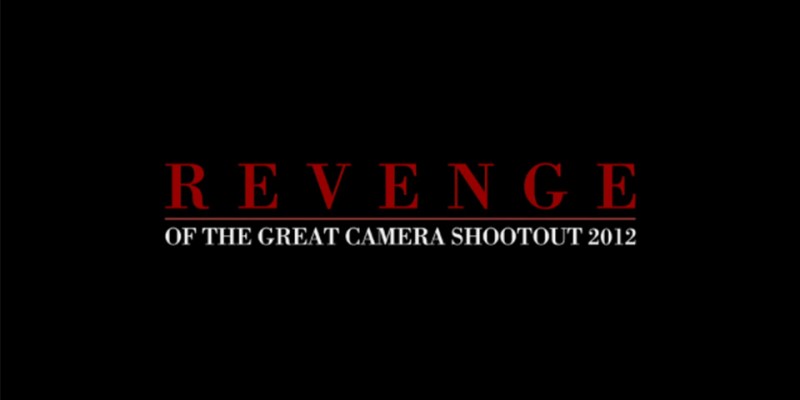The Great Camera Shootout by Chicago-based Zacuto has become an annual digest of what’s new in cinema cameras. For the last three years, the Emmy award-winning documentary series has been testing the hottest trends in digital film-making tools, from professional budget cameras down to affordable DSLRs, and comparing them to the golden standard, 35mm film. This year, the producers decided to shake things up a bit and offer something different — a blind test.
Instead of asking respected industry professionals to discuss the virtues of various cameras, the producers sat everyone down and projected nine clips of the same scene, as shot by nine different video/cinema cameras. The camera lineup consisted of the Panasonic GH2, Canon 7D, Canon C300, Sony FS100, Sony F3, Sony F65, RED Epic, Arri Alexa, and the Apple iPhone 4S. The audience members were then asked to vote for which scene they felt was the most pleasing image, while not being told which camera they were seeing at any time. No biases, just judge with their eyes.
But Zacuto made it even more interesting with the scene’s release. The first part of the documentary introduced the concepts, cameras and the actual blind test footage, which was labeled with letters A through I. Results and secrets weren’t revealed until part two of the documentary, over a month later. This sparked all kinds of internet discussion on the topic, with forums creating their own polls and taking bets on which camera was which. For the most part, many of the cameras could be determined based on the quality. Camera D, for example, was clearly the iPhone, while cameras C, H, and F were clearly higher end and more expensive offerings.

Poll conducted by NoFilmSchool
But the option that appears to have stolen the show in votes, both online and at the actual events was choice B. This was even the camera picked by the Godfather himself, Francis Ford Coppola, who attended the screening at Skywalker Ranch. Clearly B was the $30,000 RED EPIC or the $60,000 Arri Alexa, right? Or at least the $16,000 Sony F3 or Canon C300?
Wrong. Camera B was actually a sub $1,000 DSLR from Panasonic, the Lumix GH2. The internet forums are currently ablaze with heated discussion on the topic, with DSLR fanboys boasting that they were right all along, and fans of more expensive gear claiming that the tests weren’t fair.
The honest truth is that it might not have been fair from a technical perspective. The lighting was adjusted for each shoot by the team responsible for each camera. It could be that the cinematographer responsible for the GH2 was more skilled and knew how to light better and showcase the camera’s strengths while minimizing its limitations. I’m not going to argue that, because this wasn’t meant to be a scientific test. This was meant to be a proof of concept, so it doesn’t matter what camera gear you use. In the right hands, even a relatively inexpensive DSLR can look more impressive than expensive cinema gear, even in the eyes of seasoned cinematic professionals.
And that’s pretty darned techciting.
For a more detailed review of the Great Camera Shootout, see Andrew Reid’s take on EOSHD.



[…] to be bringing high-end video features to its mirrorless GH3 camera, the replacement to the blind test winning cult hit that was the GH2. At the time, it was pointed out that Panasonic wanted to bury the […]